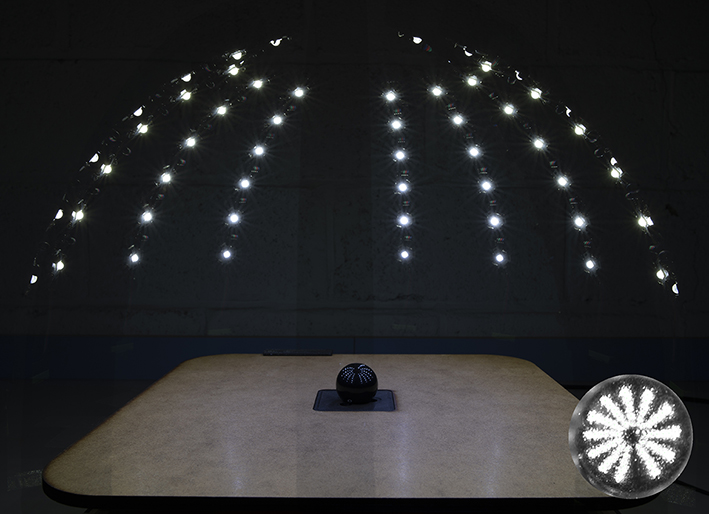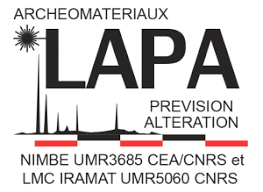
Scanning Electron Microscopy – Field Emission Gun coupled with X-Ray Detector
The scanning electron microscope (JEOL 7001-F) coupled with X-ray analysis (Oxford) is a widely used device in all research themes of the laboratory. It is utilized for imaging, spot EDX analyses and hyperspectral mapping through motorised stage. The Aztec device has a particle analysis function that enables statistical approach through the composition of large non-metallic inclusions analyse.
Zeiss Axio Imager Vario Optical Microscope
The laboratory is equipped with a Zeiss Axio Imager Vario optical microscope with a motorized stage. Five objective lenses of respectively 5x, 10x, 20x, 50x and 100x enable magnifications up to 1000x. The microscope is also equipped with a polarizer. Acquisitions are processed using the ZenCore v 3.3 software, which offers several features including extended image mosaics and focus stacking for optimum subject sharpness at large magnifications. This microscope is mainly used at LAPA to observe polished sections of metal samples, before and after metallographic etching. It is also suitable for observing lithic materials (concrete, metallurgical slag, rock, etc.).
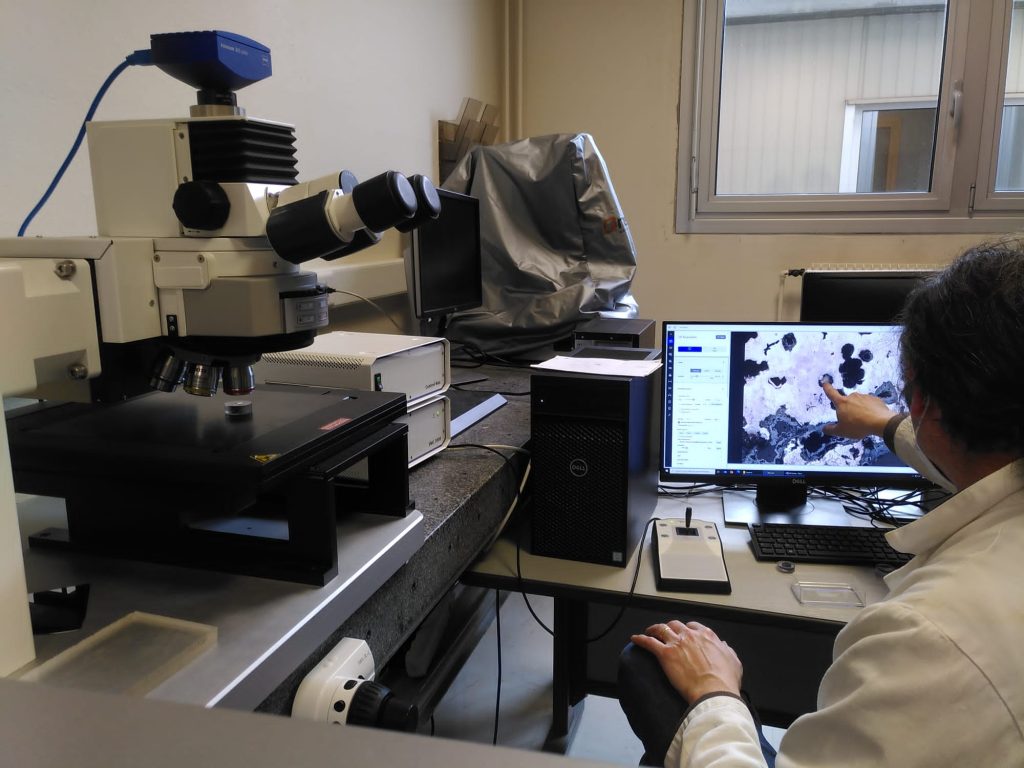
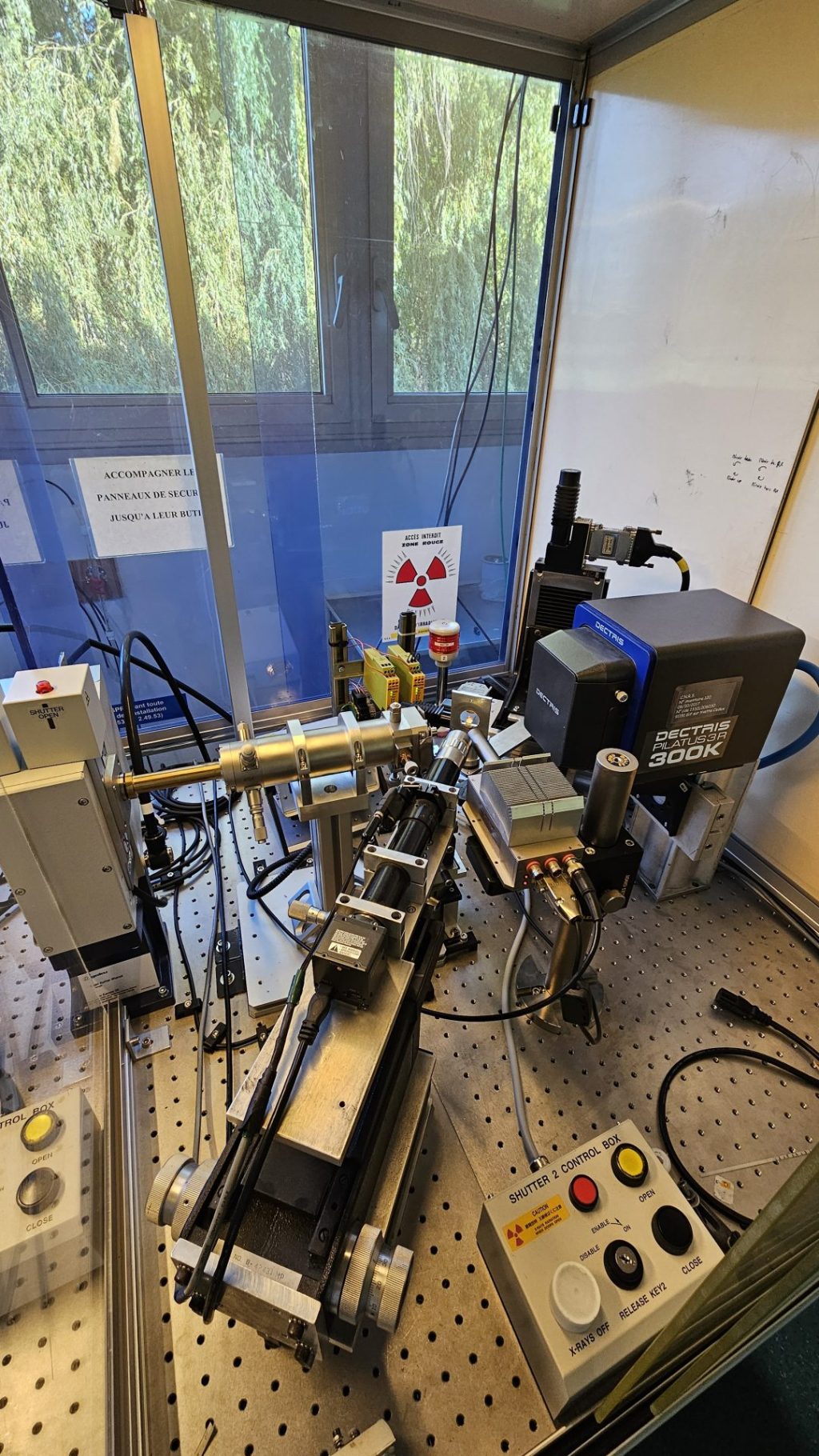
The LAPA X Ray Microprobe
The multi-technical platform developed at the LAPA, based on equipment, staff and know-how related to the multi-scale and dynamic analysis of archaeological systems, particularly those containing metals, will be integrated into the ESPADON project ecosystem, i.e. the production of 2D/3D data intended to be integrated into a digital platform that will make it possible to link all the information, from that related to the archaeological site to the microscopic impurity studied in the objects.
RAMAN Microspectrometer
Complementary to micro X-ray diffraction, the Raman microspectrometry funded by the ESPADON project is an analytical device of critical importance for characterising the crystalline structure of materials. As such it is well suited to determining the distribution of phases formed in the corrosion layers of iron or steels over decades or centuries in varying environments. Iron oxides, oxy-hydroxides and carbonates are the main phases encountered in these systems at LAPA, studied in transverse sections.
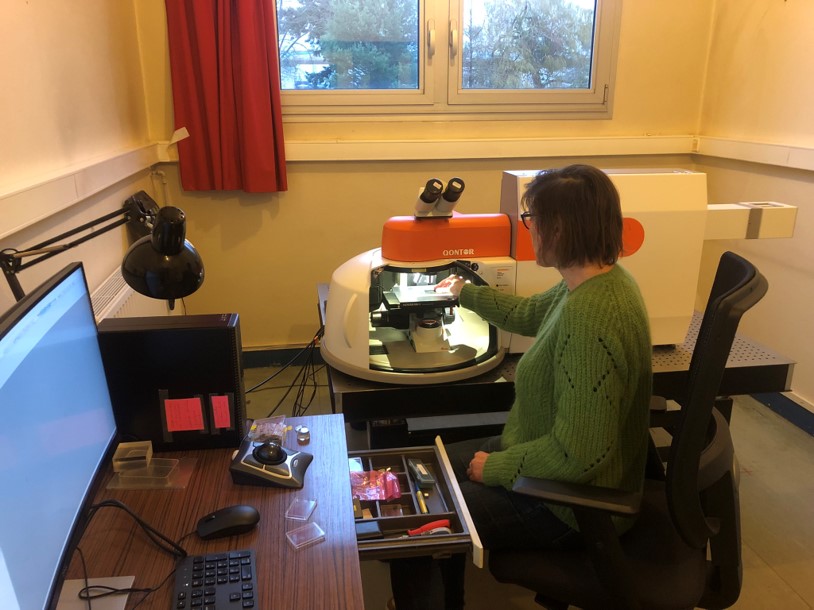
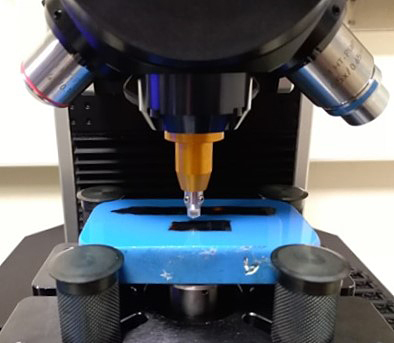
Qness A10+ Microdurometer
Hardness tests are automatic and programmable. Isolated points, transepts or complete surface mappings can be carried out. Vickers or Knoop hardness tests can be performed. Reading is guaranteed by x4, x20, x40 and x65 lenses. The load applied to the indent varies from 0.005 to 10 kg. Automatic reports are produced, and hardness maps are obtained from the mappings.
Development of an open source RTI acquisition system : HASOR (Handheld Acquisition System Open RTI)
Reflectance Transformation Imaging (RTI or Polynomial texture mapping) is a method based on compiling photographs, with the only variable being the angle of incidence of the light source. It is designed to highlight surface features through the interplay of shadows and light using dynamic files, allowing for the adjustment of lighting orientation and the application of filters to reveal details that are difficult to perceive in a traditional photograph. Archaeological applications are vast. Beyond increasing the level of information, RTI overcomes the difficulty, and even the impossibility, of transporting artifacts to the specialist responsible for their study.
